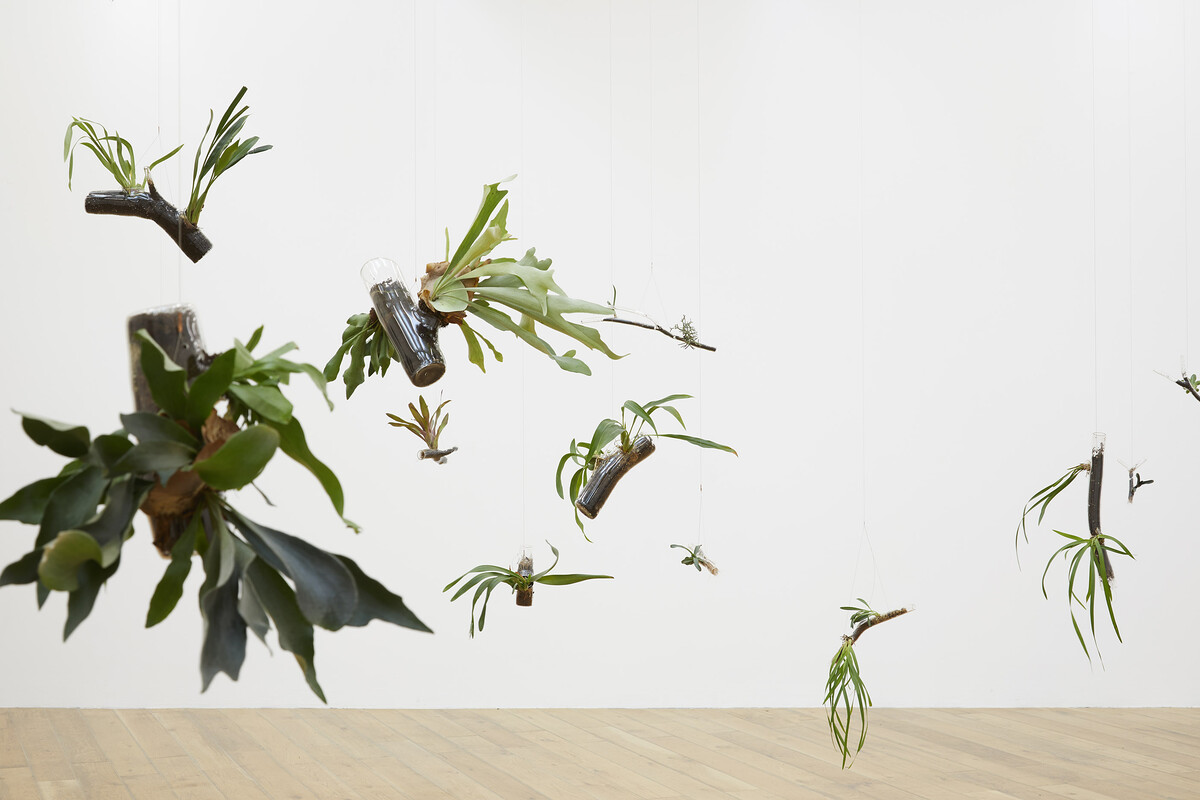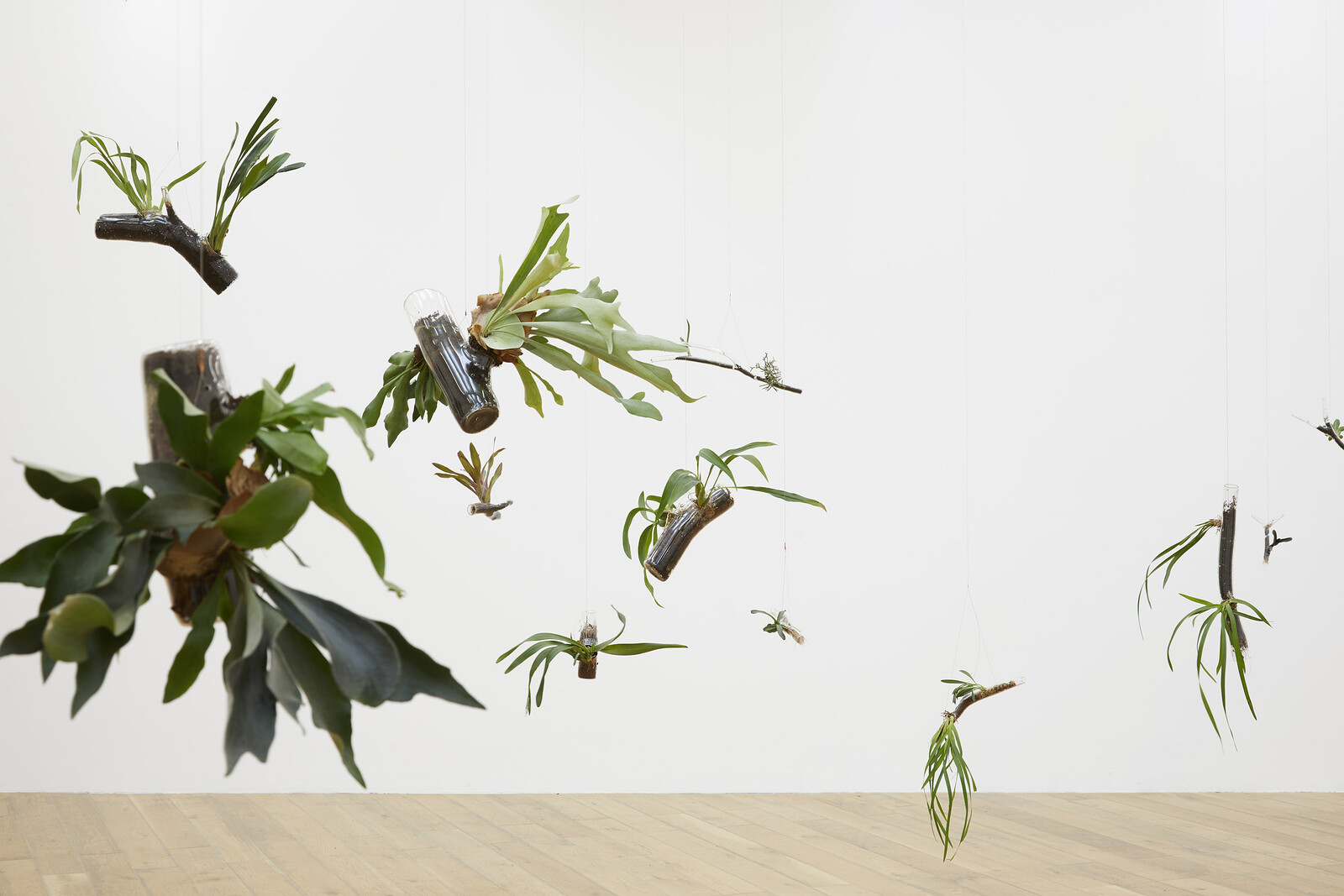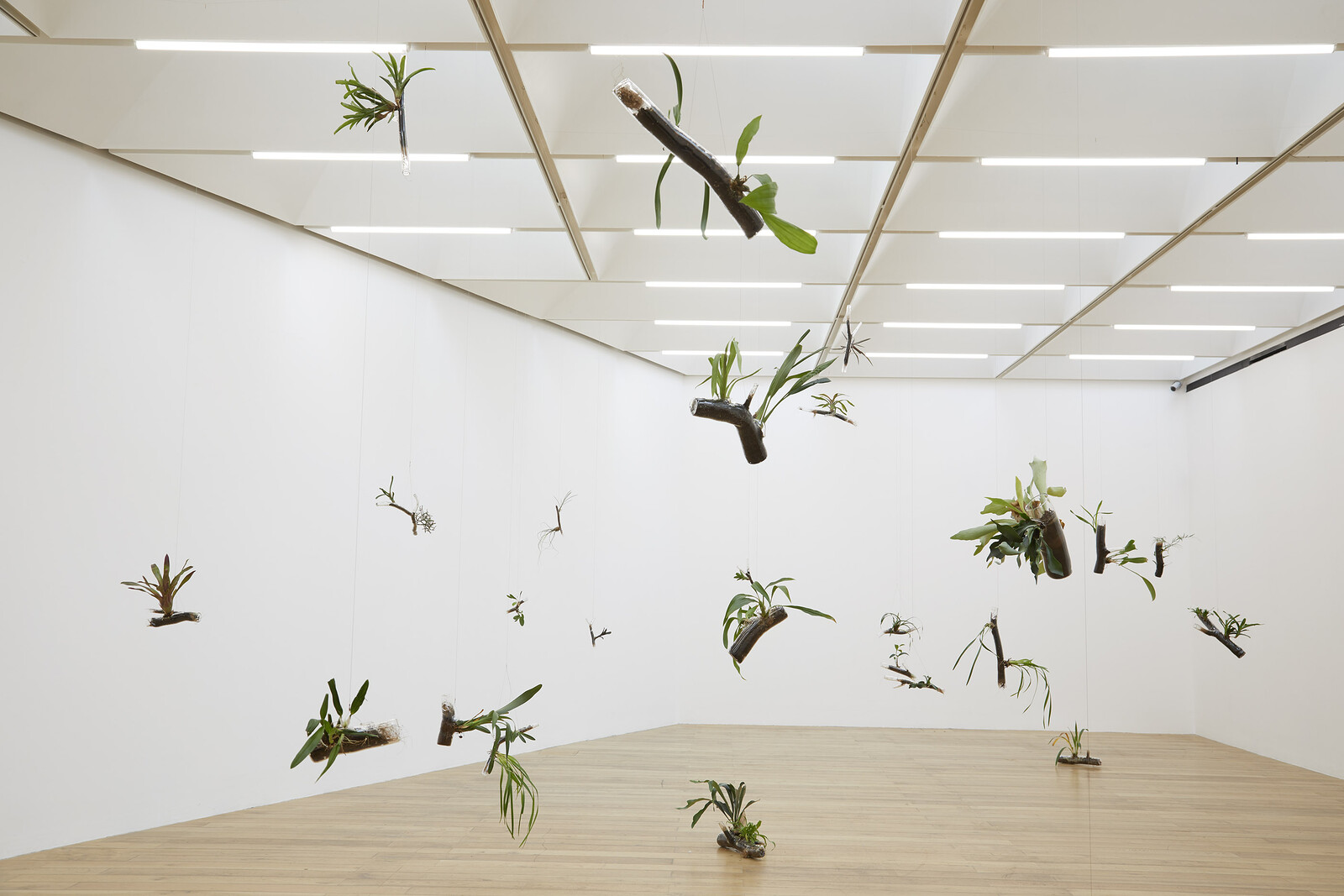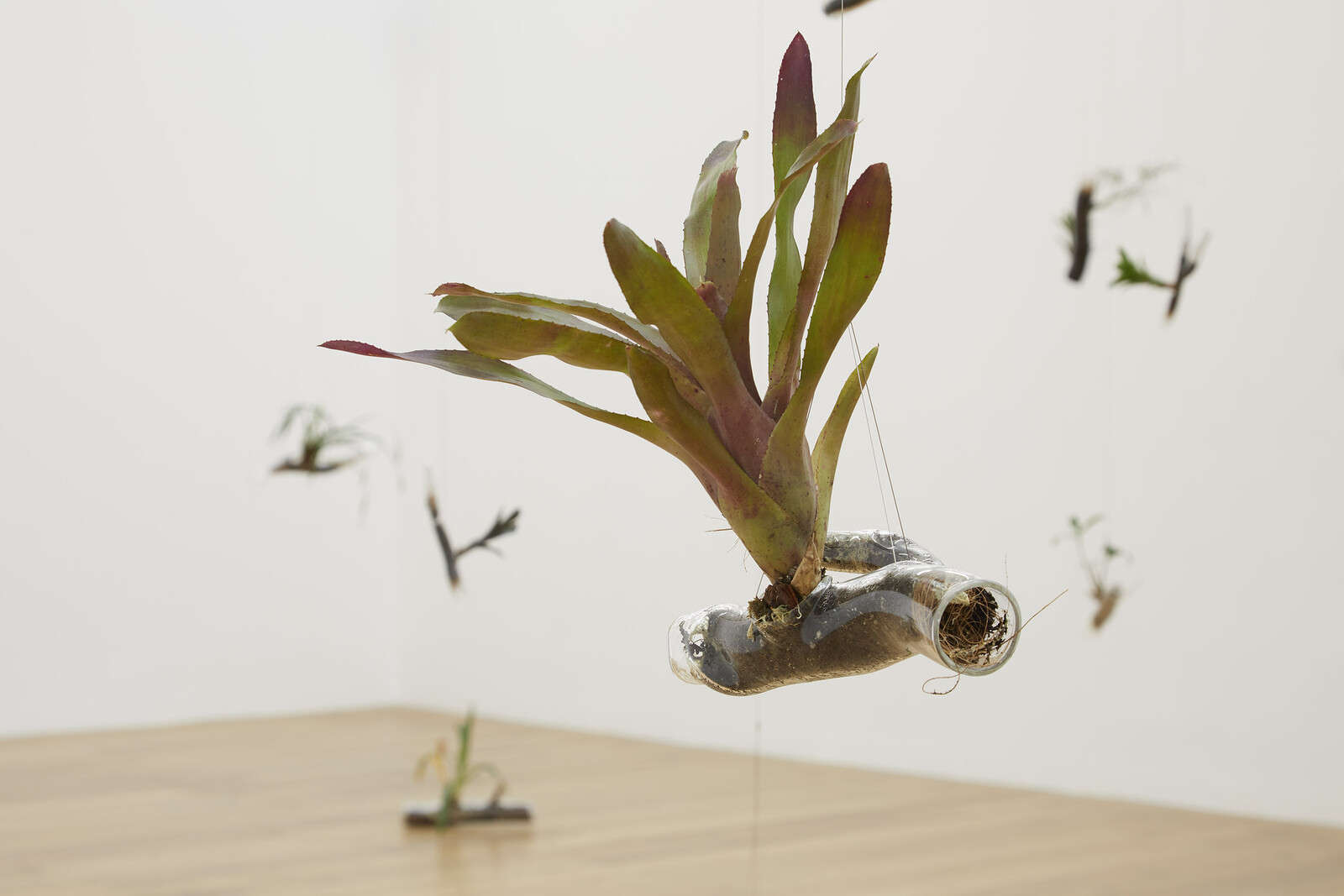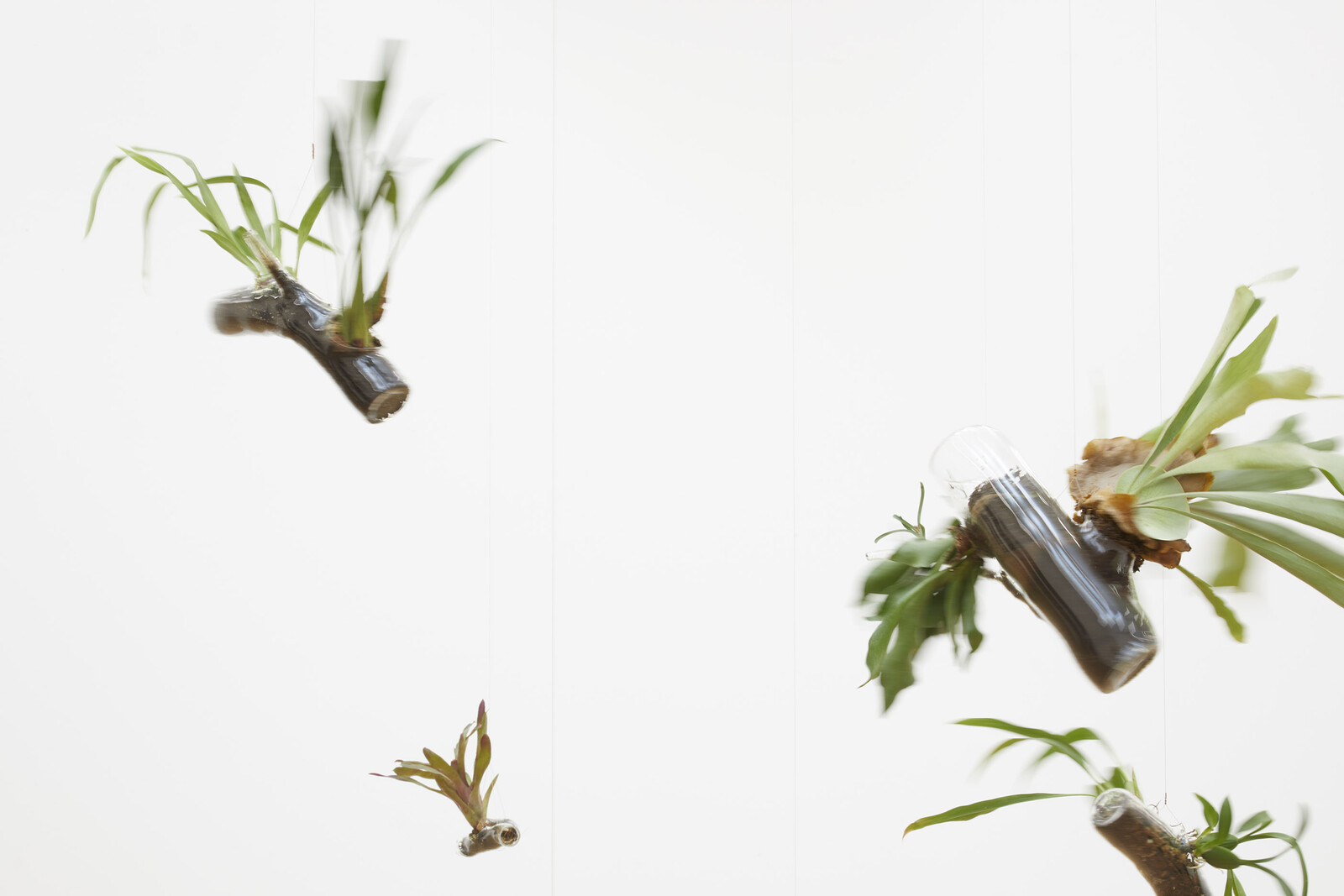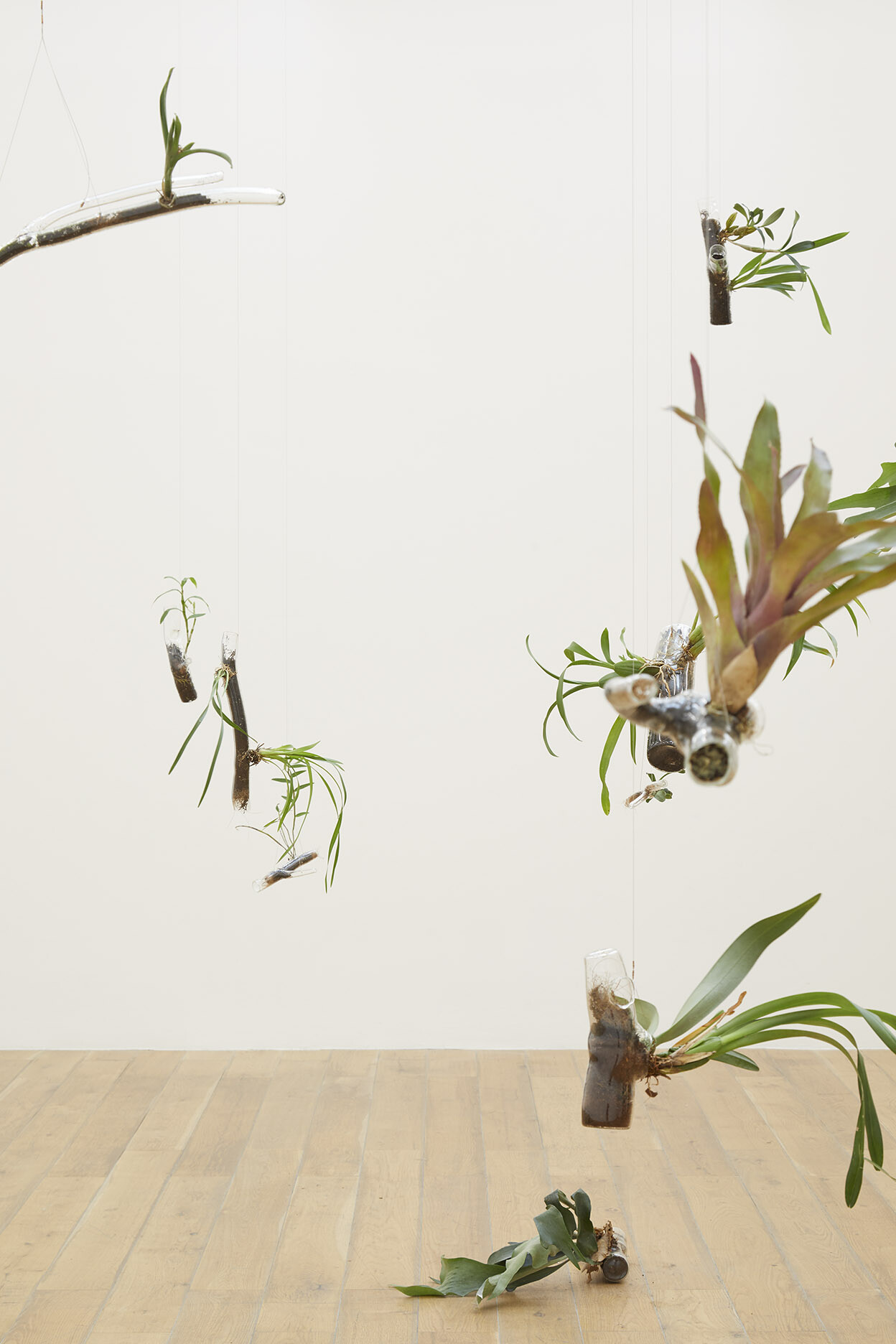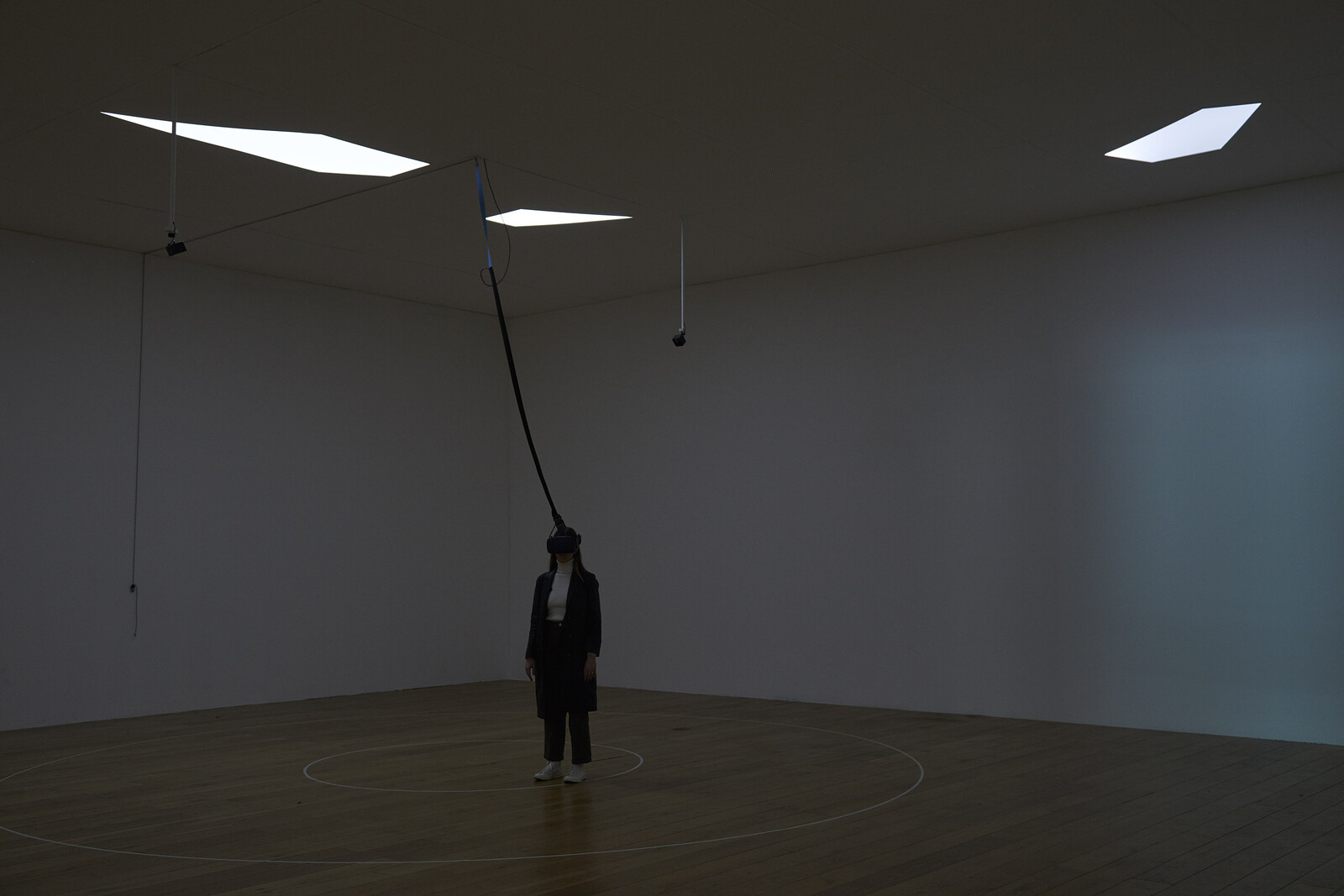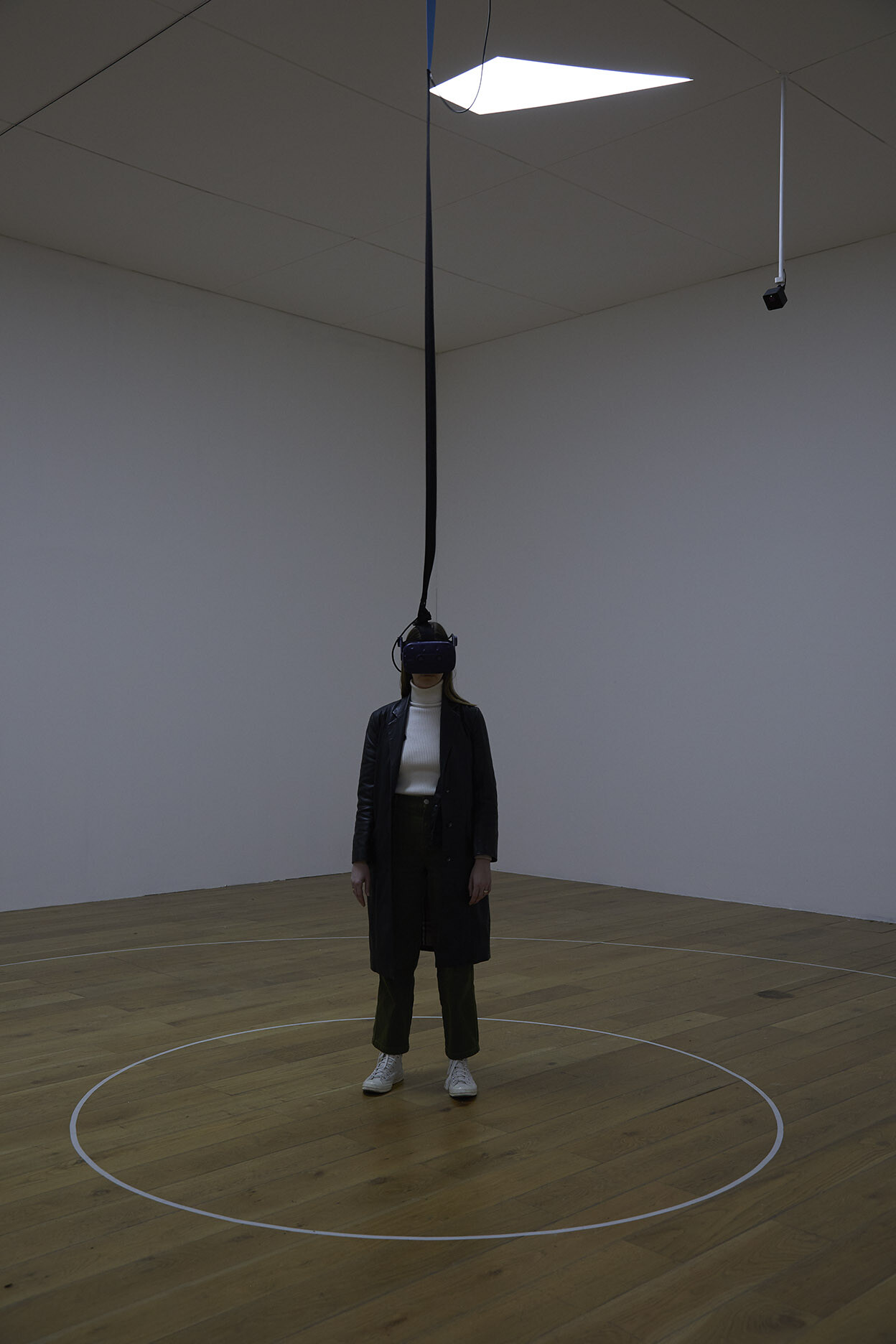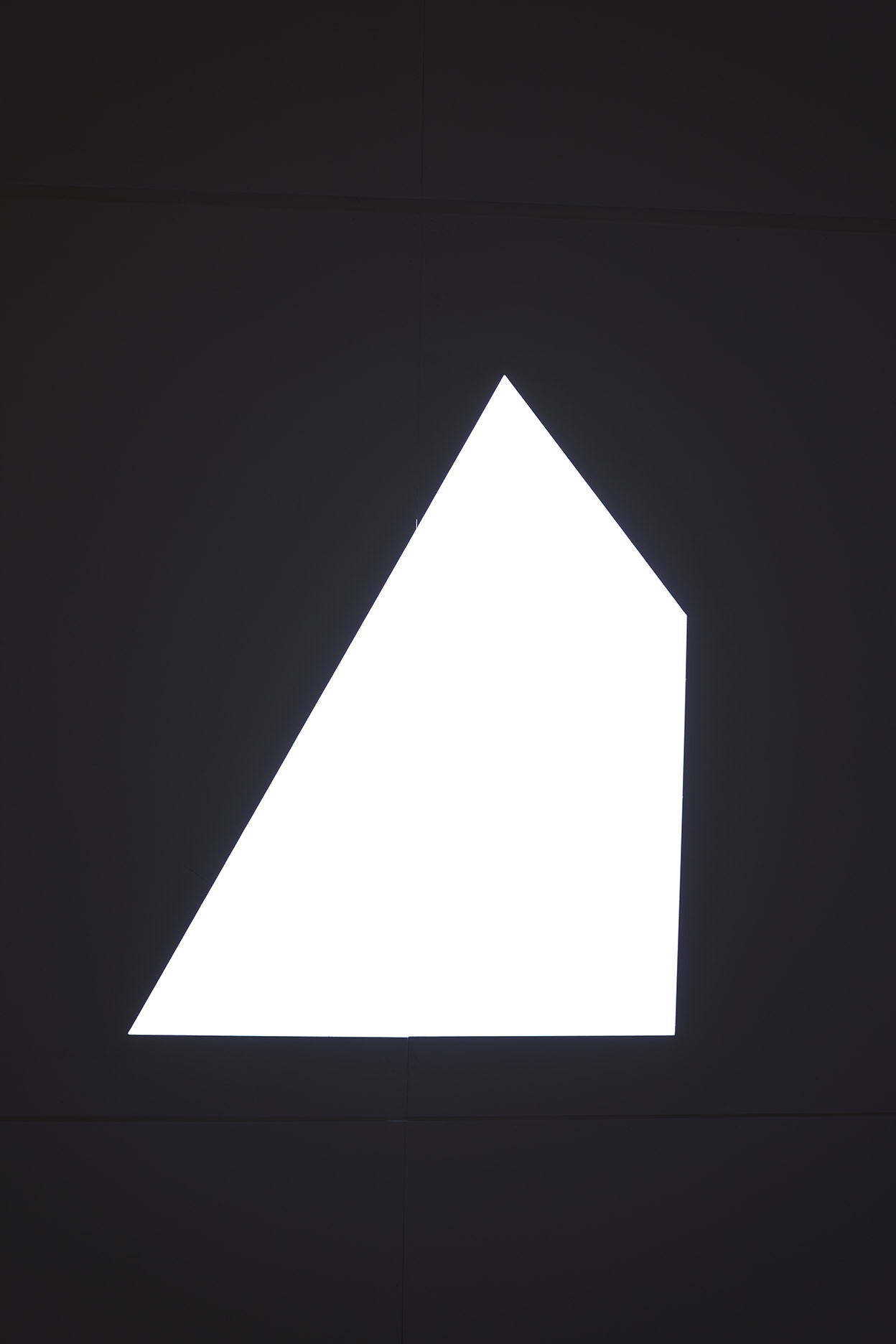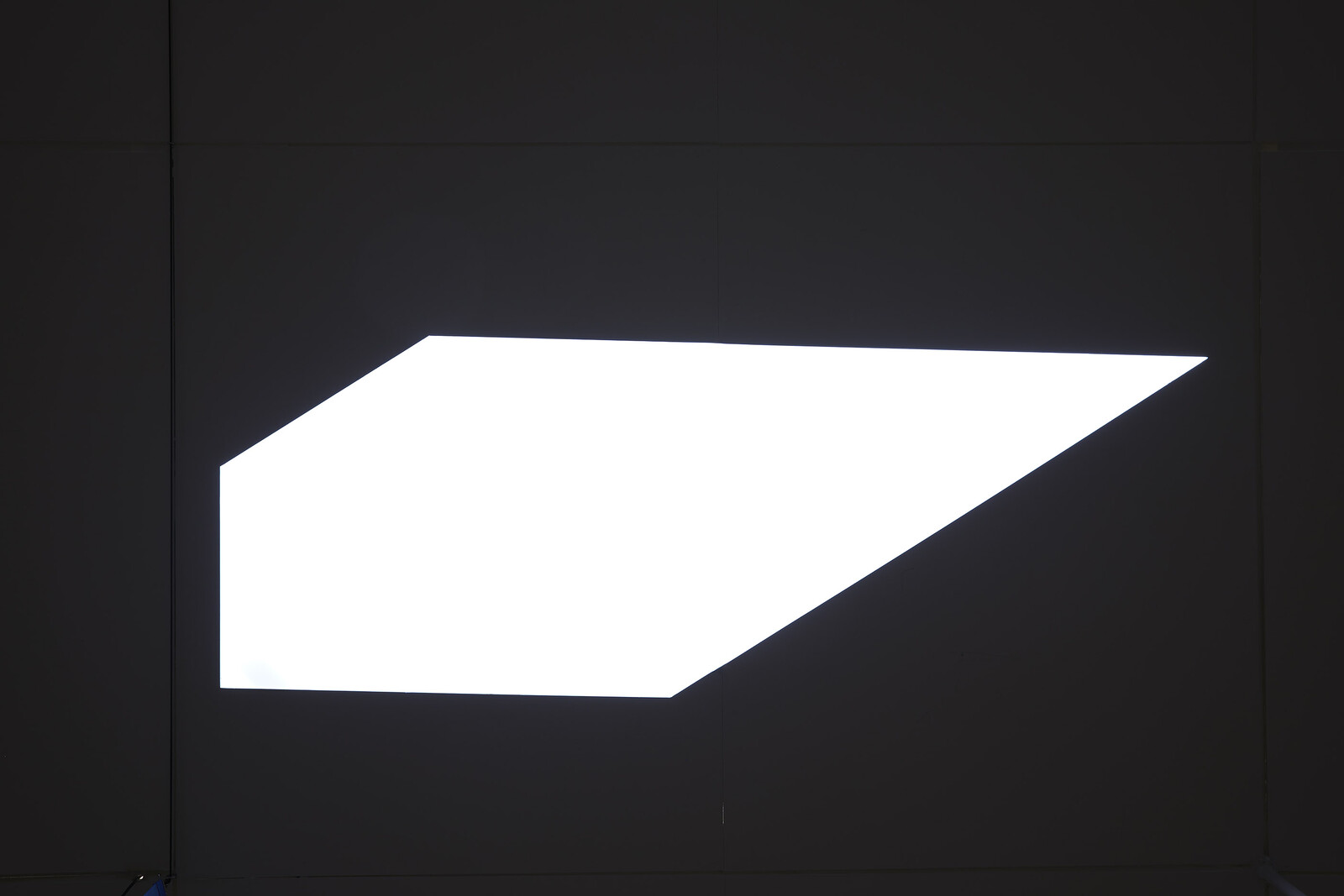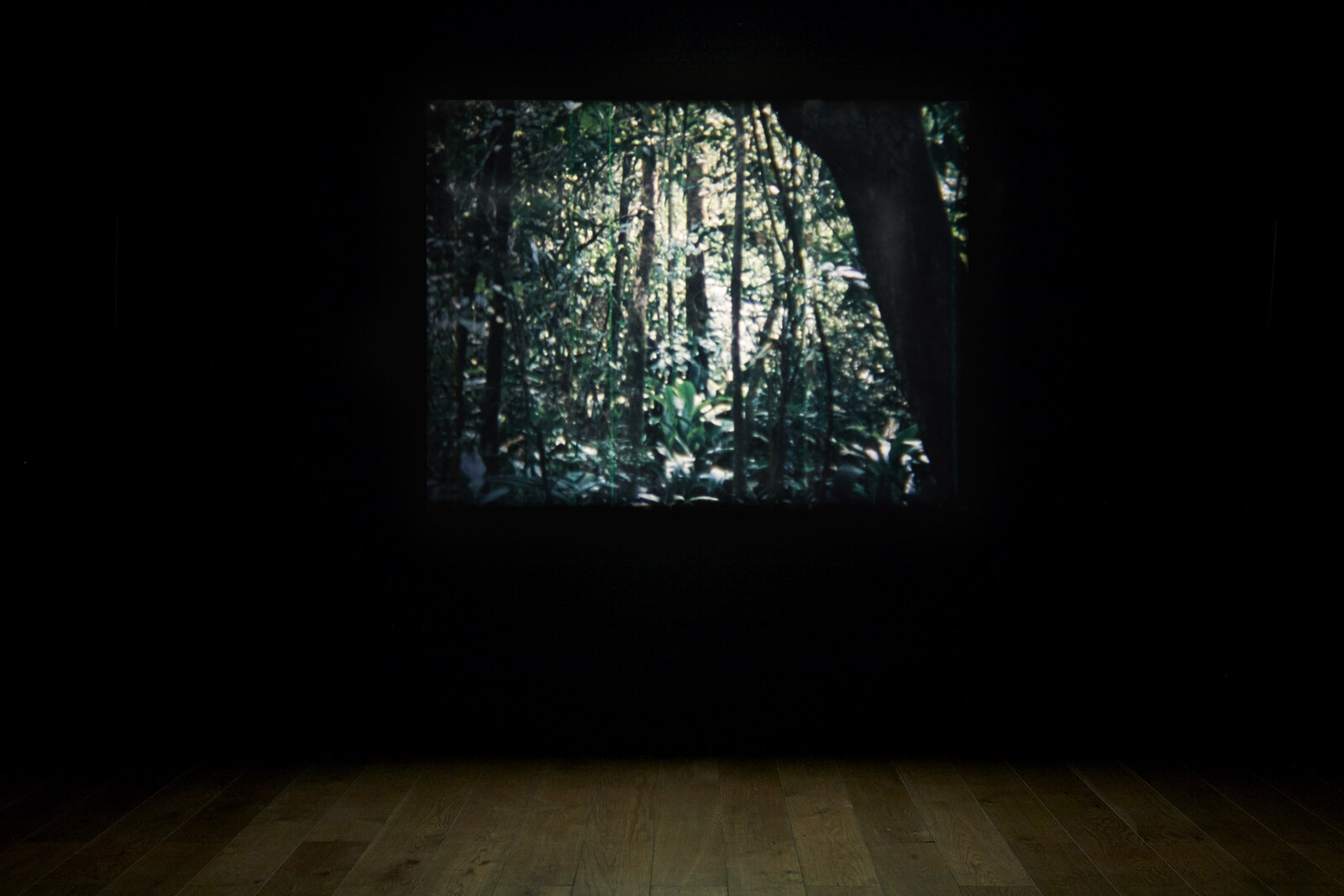Daniel Steegmann Mangrané’s first major solo show in the UK is a surprisingly understated affair. Comprising two new and two existing works across two galleries, the show’s modesty is not only quantitative, but also aesthetic. Best known for his appealing curtains of colored aluminum mesh, which have occupied gallery spaces and fair booths across the world, in this exhibition the Rio de Janeiro–based artist has embraced more inconspicuous gestures.
A new commission, Living Thoughts (2019), brings the biodiversity of the Atlantic Forest into a brightly lit white cube. This rainforest, which stretches along the Atlantic coast of Brazil and into parts of Paraguay, Uruguay, and Argentina, is home to some 23,000 species of plants and more than 2,000 species of animals. But with only 7 percent of its original extent preserved, it has become Brazil’s most endangered ecosystem. São Paulo and Rio de Janeiro, two of the world’s largest cities, were built over areas of the forest.1
At the gallery, dozens of native plants protrude from hand-blown vases shaped like branches. Ferns, bromeliads, cactuses, and orchids sprout out of the small orifices of the transparent vessels, which are either resting on the floor or hanging from the ceiling at the height they would grow on trees in the wild, giving the impression of being in an uncanny forest where most of the vegetation has been erased. These “branches,” blown by glassmaker Jochen Holz, are delicate and convincingly lifelike. Only the flat bases of the vases, which contain the soil, confirm their handmade origins. Yet, in light of the recent developments in Brazil—where there are fears of a surge in deforestation and violence against indigenous people following president Jair Bolsonaro’s decision to hand over the regulation of forests and the designation of new indigenous reserves from the Brazilian Forestry Service to the Ministry of Agriculture, now led by an agribusiness lobby2—Steegmann Mangrané’s representation of the nature-culture dyad, its synergies and conflicts, feels a little too literal.
Behind the door to the second gallery, a visitor wearing a virtual reality headset is traversing the perimeter of two concentric circumferences marked in white on the gallery floor. I wait for my turn to enter this VR environment, Phantom (Kingdom of all the animals is my name) (2015). The room is dark, with only small slithers of LED light coming through irregularly shaped, polygonal cuts in the ceiling, titled _C_A_N_O_P_Y_ (2019). The lights dim or brighten in response to weather data collected from the Atlantic Forest, mimicking the real-time light conditions of the area.
Once I put the Phantom headset on, I find myself in a black-and-white section of the Atlantic Forest. When I look down, my body is gone, with no digital avatar to replace it. I’m (in) the trunk of a tree, branches shooting out of me, which makes me feel a like a contemporary rendition of the myths of Daphne or Myrrha, limbs swirling up in pulsating tendrils. As I move cautiously about the landscape, I think of how, in classical Greek literature, wayward nymphs were punished by this vegetal metamorphosis, which, given the commercial exploitation of trees, seems both demoralizing and prescient.
In a small, black room nearby, 16mm (2008–11) is projected on a loop. The camera glides across the rainforest in a continuous take, moving at the speed at which the film moves through the camera. Trees and plants slide ceremoniously toward the viewfinder. After going though several loops, lulled by the rickety noise of the projection and the clamor of cicadas and birds, I start to see the lush landscape as a character, 16mm as a Warholian Screen Test portraying an ecosystem instead of a New York cultural figure. This phenomenological shift feels deliberate, given how vocal Steegmann Mangrané has been about the influence of Brazilian anthropologist Eduardo Viveiros de Castro on his work. Especially influential to the artist was Perspectivism, a concept Viveiros de Castro coined in the 1990s in relation to Amerindian cosmology, in which humans and nonhuman entities are all “endowed with the same generic type of soul.”3
In that sense, the title of the show—borrowed from Ursula K. Le Guin’s 1972 novella, in which the indigenous population of a forested planet is used as slave labor in logging operations by invaders—is telling. Steegmann Mangrané is using the forest as a metaphor for the present world, with its intrinsic fight to both preserve and exploit its resources and the endless opportunities afforded by its biodiversity. He succeeded in bringing the rainforest into the museum in a multifaceted way: film, VR, installation, data collecting. Yet, for all the conceptually nurtured proximity between viewers and the forest, standing in the Nottingham galleries on a gray morning, the Atlantic Forest feels very far away; its unruly soul objectified, turned into something too neat and packageable.
Eduardo Viveiros de Castro, “Cosmologies: Perspectivism” in The Relative Native, Essays on Indigenous Conceptual Worlds (London: Hau Books, 2015).
